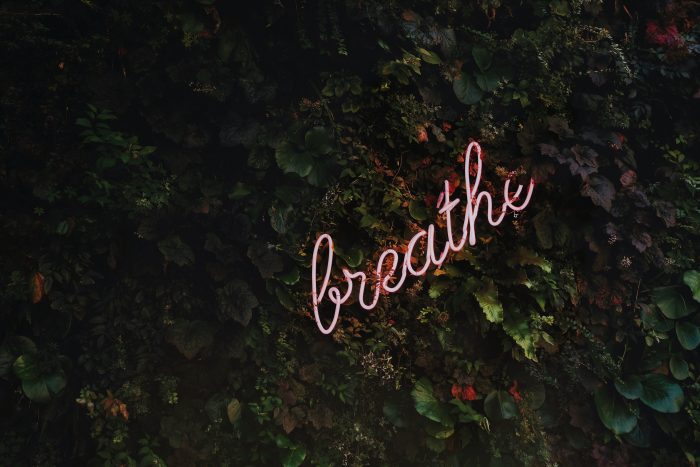Anxiety, for me, is quicksand. It’s a trap. As soon as I realize I’m having an anxiety attack, I’m often already struggling severely emotionally and digging myself deeper into an exhausting, sinking pit of anger and fear. It’s suffocating and cloying and claustrophobic. In the past year, I’ve realized that the key to getting ahead of anxiety and preventing the steep descent into an anxiety attack is to recognize the early warning signs. For this, I need to cultivate presence, mindfulness, and awareness.
A seemingly insignificant interaction or event can trigger an anxiety attack in a person who is near their breaking point and is unaware of their extreme stress level or feels helpless to stop its release. Treating anxiety requires a multifaceted approach that involves long-term strategies, such as working with a psychotherapist, considering medication options, and creating a stress-free living environment in the home. Often, we also need short-term methods that can deliver quick and effective results. Here are four ways that I reduce feelings of anxiety in 30 minutes or less.
1. Go out into nature
The “go-to” method for cultivating awareness and mindfulness is meditation. While this is a great pathway, it can be very intimidating and challenging to Westerners who have not been brought up in a culture that practices meditation everyday. Eckhart Tolle recommends starting with a mindfulness practice that is simple and easy—being with nature. Tolle states that a person can begin to cultivate mindfulness by simply taking a walk through a park, garden, or forest near home or work. Even a 5- to 15-minute walk outdoors and/or in the park can begin to cultivate a person’s awareness of the present.
I apply Tolle’s principles by finding a quiet place to walk or sit by myself and direct my attention to an element of nature such as sunlight, water, or a tree. In nature, I tend to utilize all of my senses to consider the element: listening, smelling, seeing, and touching the natural element I’ve chosen. The key to finding peace in this moment is suspending the tendency to identify and label the natural element and suspending judgment of the element’s worth, beauty, or value.
2. Scan your body
When I wake up, I set an intention to scan my body several times a day. The body will provide early warning signs while the mind will often deny that anything is wrong. Shooting pain, tingling, numbness, abdominal pain, chest pain, nausea, shaking, feeling strangely hot or cold, shortness of breath, increased heart rate, and unusual stiffness are all symptoms that can be attributed to anxiety.
When deciding to do a body scan in the morning, I usually set an alarm on my phone or computer for at least two to three other times throughout the day. I usually become more aware of how I’m actually feeling and then decide what I can do to reduce strain or stress in the moment, whether it’s standing and stretching, taking a brief walk away from my office space, or engaging in deep breathing.
A body scan can be completed in less than five minutes and simply involves closing my eyes, taking deep breaths, and moving attention from the tips of my toes through the top of my head, taking note along the way of any strange or unusual sensations or discomfort.
3. Cultivate a physical practice
People who suffer from anxiety should regularly exercise. Since anxiety often manifests physically, a physical practice that targets the body helps reduce the stress hormones that build up in the body. The important distinction is that the form of exercise should help engage the body in a holistic and gentle manner while releasing tension and cultivating self awareness.
Everyone is different and needs varying levels of intensity to release stress through exercise. I think of it as yin and yang practice. Yin practice is much more meditative physical exercise. It tends to be slower and more gentle and is a focused practice that cultivates breath and self awareness. Hatha and Yin Yoga, Qi Gong, golf, Tai Chi and walking are examples.
Yang practice tends to help release stress and anger. Kung Fu, kickboxing, and Taekwondo, running, boxing, power yoga, P90x, and swimming are all examples of more demanding physical practices that tend to have much higher levels of intensity. It’s important to have a balanced physical practice that helps to create mental and physical self awareness while relieving stress and tension. I typically engage in 10–30 minutes of either yin or yang exercise forms daily to reduce anxiety and create more self-awareness.
4. Journal
In addition to the physical awareness needed to help prevent and shorten anxiety attacks, keeping a journal can help cultivate awareness of our state of mind. Just as the body needs a release, the mind does as well. Keeping a journal helps me release pent up thoughts and emotions while helping me become more aware of my thoughts.
Writing is also similar to talk therapy in that it engages the writer in processing thoughts and emotions, creating a deeper level of awareness. Journaling can involve freestyle, freeform streams of consciousness, recreating the day in reverse, or gratitude journaling. All of these writing exercises can be done in 5–30 minutes a day, any time of the day that feels appropriate.
At the end of the day, I need to acknowledge my self-worth and be kind to myself. Dealing with anxiety is an ongoing struggle. I have days when I miss the boat. If I find myself in the midst of an anxiety attack, I work on becoming aware of it more quickly when it happens and preventing it from happening as often. If I can reduce the frequency and severity of my attacks, then I am making progress.












Read 0 comments and reply